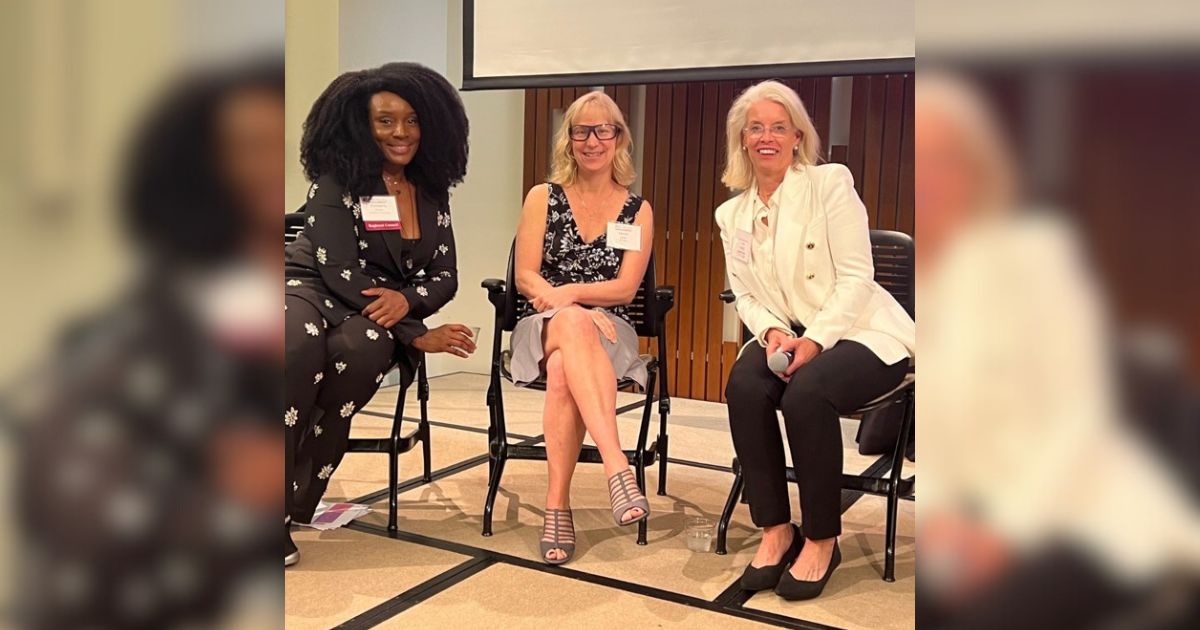The way we work has changed drastically over the last two years. For those in traditional office jobs especially, the game has changed. The necessity for remote work during the pandemic created opportunities for work-life balance that many never thought would be an option.
Nearly two years later, this new flexibility is not only an option, but an expectation for many.
At Greenridge Realty, we decided to move forward with a hybrid work model for certain members of our staff. We have set days working in the office together for increased collaboration, but many of us follow a tailored schedule with time spent working from home, as well.
Creating the new hybrid work model was not a clear and perfect path. Though we'll surely continue to make adjustments, here are four tips we've found helpful to adapt to the changing workplace today and beyond.
1. COMMUNICATION IS VITAL
As vaccines were made available and the pandemic seemed to be slowing down, we had more in-person meetings and began to navigate the shift back to our pre-COVID work schedule. For some, this was exciting and a welcome return to the way things were. Others were grieving the loss of autonomy and work-life balance. It took honest, open dialogue to reach a compromise that would provide increased collaboration and office culture, while allowing for the freedom and flexibility that many had been enjoying.
Once we began talking about it, we found that we really weren't as far apart on the matter as we'd thought, and in the process, we opened up communication lines that will serve our company well long term.
2. TRUST THE RESULTS
There's no doubt about it: Remote work requires a lot of trust.
In a leadership role, there's comfort in seeing your employees arriving on time, working hard at their desks, checking in on them, and even just saying "hi" throughout the workday. As other companies were deliberating over bringing employees back into the office, I heard comments like, "people just need to get back to work" or "how can you trust that people aren't just working in their pajamas all day?"
My response: "Who cares?"
In most remote work situations, people weren't getting "back to work." They'd been working their tails off, all while learning new ways to work smarter and more effectively. It's important to focus on the additional skills that were developed because of that stretch. In my experience, the right employees will thrive in autonomy and if given the chance, will work extra hard to prove they can. If their personal lives benefit from that added freedom—wonderful!
3. MAKE THE MOST OF YOUR TIME IN-PERSON
If you're asking people to be in the office, make it worth everyone's while. For leadership, that means creating a positive and welcoming environment, having meaningful meetings, and creating opportunities to develop your office culture.
As an employee, don't begrudge your office days—make them count! Do what can't be done as easily at home and have thoughtful interactions with your colleagues so you feel more connected the next time you're on a Zoom call.
4. SET EXPECTATIONS, BUT REMAIN FLEXIBLE
No matter how you structure your hybrid work model, there are bound to be adjustments along the way.
At our company, some staff no longer work remotely at all, while other departments are in the office together three days a week. The key is setting a schedule for consistent communication (whether in-person or not) and expectations for how workloads are being managed and delegated.
Nonetheless, don't be afraid to switch things up if it's not working. In the department I manage, we were in a good weekly meeting rhythm when one of our contract workers moved out of state and to a new time zone. So, we adjusted. The added benefits are that she didn't need to be replaced simply because she relocated—she was able to follow her dream of living in another city and I didn't have to hire someone new ... a win-win!
While the pandemic brought a myriad of challenges, it was nothing short of life-changing for many when it came to work-life balance. With compromise, communication, trust and flexibility, both employees and employers can reap the benefits of this shift in perspective and achieve great results together—even if not face-to-face.
Beth DeVries is the Director of Marketing & Communications at Greenridge Realty, Inc., one of Michigan's longest-standing family-owned real estate agencies. Greenridge Realty currently employs more than 400 real estate agents across 26 West Michigan offices. For more information on Greenridge Realty, visit greenridge.com.




